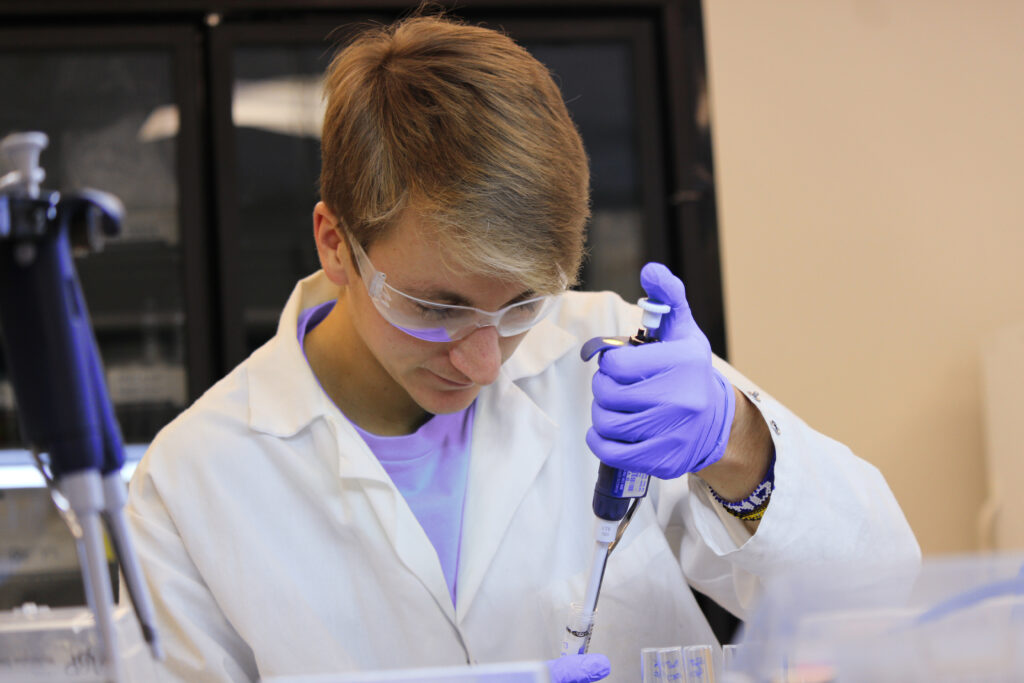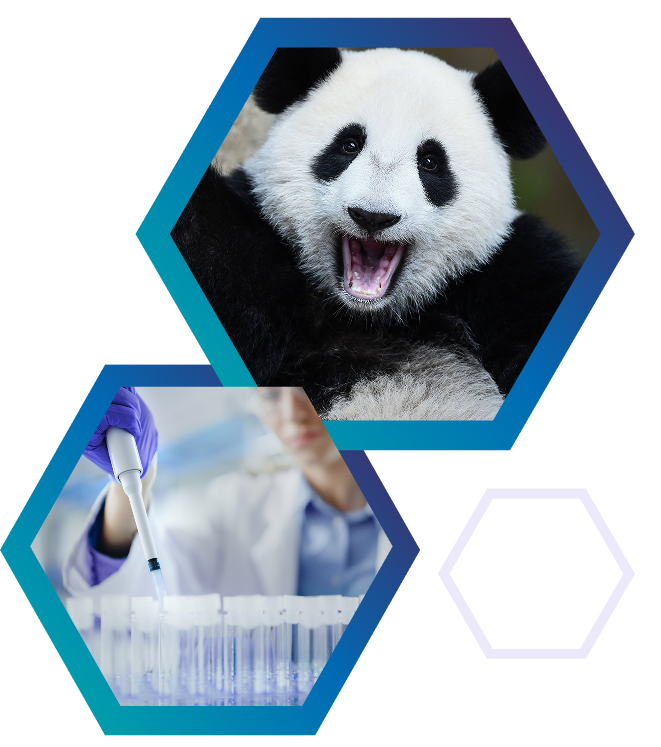What Is an ELISA Kit? A Beginner’s Guide to Lab Testing Success
Picture this: your PI just handed you a protocol that mentions “ELISA kit” about fifteen times, and you’re nodding along like you totally know what that means. Don’t worry. We’ve all been there. Let’s break down what an ELISA kit actually is and why it’s about to become your favorite lab technique.
What Is an ELISA Kit?
An ELISA kit is your one-stop shop for detecting and measuring specific proteins, hormones, or other biological molecules in your samples. Think of it as a highly sensitive and quantitative biological detector that can tell you not just “yes, this thing is here” but also “here’s exactly how much of it you’ve got.”
ELISA stands for Enzyme-Linked Immunosorbent Assay, which sounds intimidating but breaks down pretty simply. It’s an measurement platform that uses antibodies to hunt down and tag your target molecule (called an analyte) in whatever sample you’re working with. When it finds what it’s looking for, it binds to it and produces a signal you can quantify, usually a color change that gets stronger based on how much of your target is present.
How Does an ELISA Kit Work?
Most ELISA kits follow a straightforward process that’s like making a very precise layered cake:
Step 1: A capture antibody that has been pre-coated in the bottom of microwells grabs onto your target molecule and holds it in place on the plate.
Step 2: A detection antibody comes along and binds to a different part of that same target, creating what we call a “sandwich” around your analyte.
Step 3: An enzyme-linked secondary antibody attaches to the detection antibody and reacts with a substrate to create a measurable signal.
Step 4: The intensity of that signal tells you how much of your target molecule was in the original sample.
The beauty of this system is its specificity. Those antibodies are incredibly picky about what they bind to, which means you get reliable, reproducible results.
What Can You Actually Test with ELISA Kits?
Here’s where things get exciting. ELISA kits are workhorses in labs across every field you can imagine:
- Disease research: HIV detection, COVID-19 testing, Lyme disease markers, autoimmune indicators
- Hormone studies: Cortisol levels, testosterone, estradiol, insulin, thyroid hormones
- Immunology: Cytokine levels, antibody responses, vaccine effectiveness
- Cancer research: Tumor markers, growth factors, apoptosis indicators
- Environmental science: Stress hormones in wildlife, pollution biomarkers
- Food science: Allergen detection, contamination testing
Everyday items like a rapid Flu test or a pregnancy test? Those are essentially simplified ELISAs.
Understanding Different Types of ELISA Kits
Not all ELISA kits are created equal. Here’s what you need to know about the main types:
- Sandwich ELISA: The most popular choice for graduate students, described in the example above. Great for larger proteins and works well with complex samples like serum or tissue lysates.
- Direct ELISA: The speediest option. It uses a labeled primary antibody for quick results, skipping the secondary antibody step. Perfect when you’re pressed for time.
- Indirect ELISA: Any ELISA that adds a secondary antibody step for better signal amplification. Useful when you need extra sensitivity. A Sandwhich ELISA is a type of Indirect ELISA.
- Competitive ELISA: Your go-to when dealing with small antigens or molecules with limited binding sites. This ELISA starts with a strong signal and measures how much the analyte interferes with it as a proxy for concentration.
Most kits come pre-coated and include everything you need: buffers, standards, reagents, the works. It’s like getting a meal kit for your lab bench.
What Samples Work with ELISA Kits?
One of the best things about ELISA kits is their versatility. You can use them with:
- Serum and plasma (the classics)
- Urine samples
- Saliva
- Fecal extracts (yes, really)
- Tissue and cell lysates
- Environmental water samples
- Cell culture supernatants
Just make sure your kit is validated for your specific sample type and species before you start. Nothing’s worse than running a full assay only to discover your kit wasn’t designed for mouse brain tissue.
How Sensitive and Reliable Are These Kits?
Quality ELISA kits are impressively sensitive. We’re talking about detection levels in the picograms per milliliter range. That’s like finding a single drop of water in an Olympic-sized swimming pool.
The best kits from a company like Arbor Assays and offers:
- Consistent results between different lots
- Validation across multiple species
- Robust quality control protocols
- Advanced amplification systems for ultra-low targets
Are ELISA Kits Actually Easy to Use?
Most ELISA kits are designed with busy researchers in mind. They typically come in 96-well plate formats that work with standard lab equipment, and the protocols are usually straightforward with 3-6 main steps.
That said, success depends on three key factors:
- Proper sample preparation: Follow the protocol exactly. Seriously.
- Accurate pipetting: This isn’t the time to eyeball volumes.
- Timing consistency: Those incubation times aren’t suggestions.
Many kits are automation-friendly if your lab has robotic systems, and most companies provide solid technical support when things go sideways.
Choosing the Right ELISA Kit for Your Research
When shopping for an ELISA kit, keep these factors in mind:
- Species compatibility: Make sure it works with your model organism. A kit validated for human samples might not work for your zebrafish study. Most Arbor Assays kits work across a variety of species.
- Sample type validation: Confirm it’s been tested with your specific sample type. Contact the manufacturer to see if they have validated it or have examples of other published studies using similar sample types. If not, don’t fret! You can validate a new sample yourself. Contact the Arbor Assays team to learn how.
- Sensitivity requirements: Are you looking for high-abundance targets or chasing down trace amounts? Some brands’ kits have higher sensitivity than others, so verify it meets your requirements.
- Detection range: Check that the kit’s measurement range covers your expected concentrations.
- Protocol complexity: Consider your experience level and time constraints. Simple, easy-to-follow protocols and “how to videos” are extremely helpful to guarantee a smooth process.
- Technical support: Look for companies that provide actual human support, not just automated responses. Whether through email or on the phone, connecting with scientists who can answer your questions gives you confidence in your results.
Why ELISA Kits Matter for Your Research
ELISA kits have become essential tools in modern research because they offer something rare in science: reliability and accessibility in one tool. They give you quantitative data you can trust, protocols you can follow, and results you can replicate.
Whether you’re investigating disease mechanisms, studying environmental impacts, or exploring basic biological processes, ELISA kits provide the precision and consistency that publication-ready research demands.
The Bottom Line
So, what is an ELISA kit? It’s your reliable lab partner for detecting and measuring biological molecules with impressive accuracy and sensitivity. It’s the tool that turns complex immunoassay techniques into manageable, reproducible protocols that even stressed-out graduate students can master.
From disease detection to hormone monitoring, from vaccine research to environmental studies, ELISA kits offer the flexibility and performance you need to generate meaningful data. They’re not just testing tools; they’re the foundation for discoveries that can change how we understand biology, health, and the world around us.
Arbor Assays’ ELISA kits offer reliable results, simple protocols, and friendly customer support across a wide range of biomarkers. With a comprehensive selection and a strong commitment to quality, we give researchers the tools they need to tackle complex biological questions. Explore our full catalog of kits.

